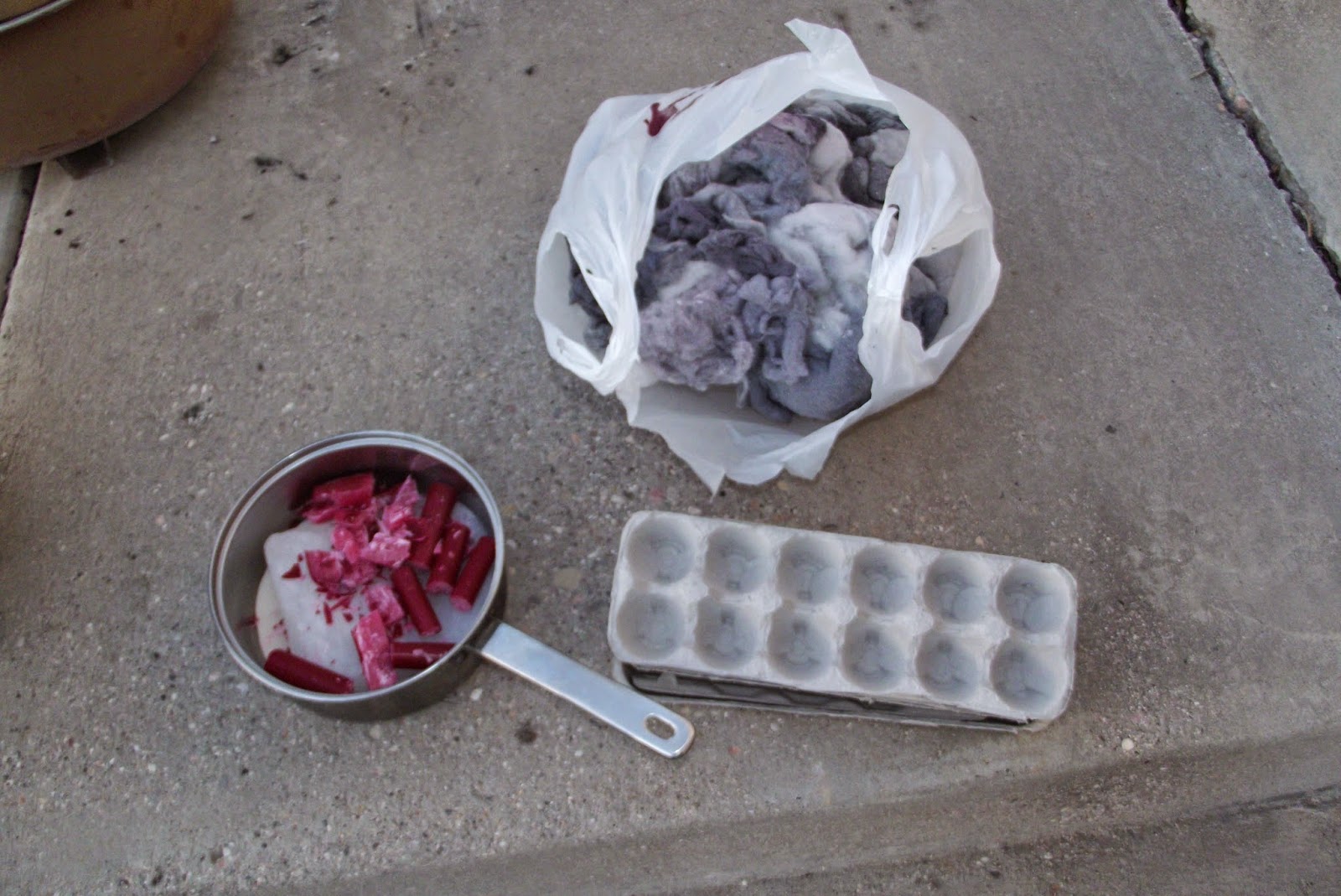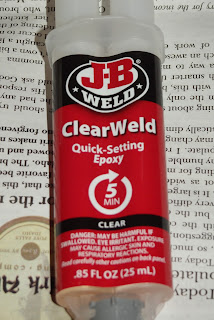At the beginning of March I was getting all antsy for it to be spring so I could go out and get stuff done outdoors. Then, nature dumped a whole bunch of snow on us, and my plans had to be postponed. So, I had the idea that as the snow melted I would collect the bits of wood and bark that turned up to use in our rocket stove.
So, once the snow had melted enough, and I had a warm day, I gathered up the things to make egg carton fire starters with my rocket stove.
 The best part of a rocket stove is that you can pretty well use anything small and flammable to fuel it. I gathered up sticks, bits of wood, pieces of bark, pine cones, and even the woody parts of some old dead weeds. If it will fit through the door and will burn, you're good to go!
The best part of a rocket stove is that you can pretty well use anything small and flammable to fuel it. I gathered up sticks, bits of wood, pieces of bark, pine cones, and even the woody parts of some old dead weeds. If it will fit through the door and will burn, you're good to go! Basically, your stove is an insulated barrel with two doors on the front. The bottom door is for ventilation. The door in the center is used to feed the fire once it is established. There is also a little removable brick that fits into the center door, to insulate your coals and maintain heat once you have a good hot batch and no longer need to feed the fire.
Basically, your stove is an insulated barrel with two doors on the front. The bottom door is for ventilation. The door in the center is used to feed the fire once it is established. There is also a little removable brick that fits into the center door, to insulate your coals and maintain heat once you have a good hot batch and no longer need to feed the fire. Open the door, remove the brick, and stuff in some fire-starting materials. (In this case, we used newspaper.)
Open the door, remove the brick, and stuff in some fire-starting materials. (In this case, we used newspaper.)
Fill the top of the stove with the fuel. (Sticks and whatnot.)

Light the starting material.

Allow the fuel to burn down until it is below the top of the stove.
 Place your pan on top of the stove. Now that the pan is on top, you can feed additional fuel in through the fuel door, if you need to. Since it only took a short time to melt our wax, we didn't need to stoke the fire.
Place your pan on top of the stove. Now that the pan is on top, you can feed additional fuel in through the fuel door, if you need to. Since it only took a short time to melt our wax, we didn't need to stoke the fire.
It won't take long to heat up your pan, my wax is melting nicely.
 Here's our wax, all melted and making fire starters.
Here's our wax, all melted and making fire starters.
This is why it's called a rocket stove. Woosh!
Don't forget, you can cook on a rocket stove. It works really well! It's small, portable, self-contained (besides a detachable grate for holding up larger pieces of wood so you can feed them through the door slowly,) it doesn't take much fuel to maintain a fire, and the fuel can be pretty much anything and can be found nearly anywhere. There are also plans online to make your own rocket stove out of various materials. While I can't vouch for the home-built stoves, rocket stoves are pretty ingenious and effective.


































